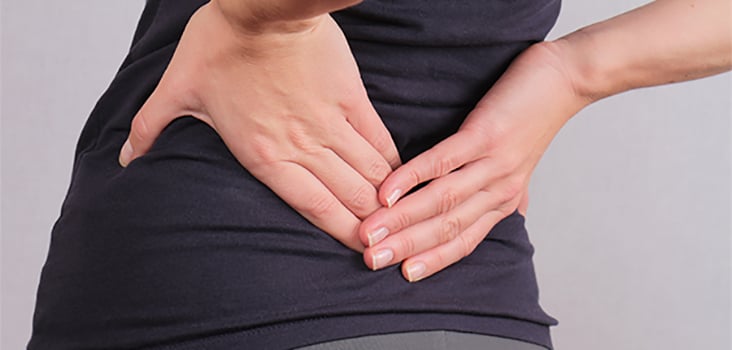
Tips for Preventing Chronic Lower Back Pain
Lower back pain (LBP) is the most common and costly health problem in the United States. More than 80% of the population will experience LBP in their lives, with the peak point prevalence is between age 35 and 55. Lower back pain is also present in up to 30% of the population at any given time, and is the fifth most common reason for a physician visits in the US.
LBP is also the leading cause of worker disability. 80% of the incurred costs were generated by twenty percent of the injured workers. The total indirect and direct costs of LBP often number in the billions. Lower back pain is a result of the way the spine itself is structured.
The spine is made up of several important parts: a spinal cord, vertebra, discs, nerves and facet joints. These groups work together to support and protect the spinal cord, as well as provide the flexibility to allow for bending and rotating. Over time, the spine will get worn down by compressing forces that push bones and discs together, and tensile forces that pull on ligaments, tendons, and muscles. These forces can occur simultaneously when lifting objects or slouching. For example, bending over too far and lifting heavy object can put a large amount of pressure on your spine.
There are two main types of back injuries: acute and chronic injuries. Acute (traumatic) injuries occur after slips, trips and falls, heavy and/or awkward loads, and improper lifting techniques. Chronic injuries (constant or recurring) injuries are due to sitting or standing in awkward postures, poor physical condition, and improper body mechanics.
One of the best ways to prevent back injuries is to stretch regularly. This helps loosen up your muscles and gives your tendons extra elasticity. Warming up before a work-shift is always a good idea. Incorporating exercises that tone the muscles in the back, hips, and thighs is helpful. Warm up before you work out, inhale deeply before each repetition, and exhale during each repetitions. The easiest way to accomplish this is to count your repetitions. Before beginning any exercise program, check with your doctor.
There are certain techniques that can help reduce chronic and acute lower back injuries. The first is to think of your back like a lever with a fulcrum in the center, ten pounds of pressure on your back lifts ten pounds of weight. But if you shift the center point towards your waist (i.e. lifting with your lower back) it requires more force. In this case, the ration changes to 10:1 or lifting ten pounds puts 100 pounds pressure on your back. That’s why you want to bend with your knees and lift with your legs. This helps alleviate excess lower back pressure.
Try these tips before starting the day:
- DO stretch your muscles before lifting
- DO wear slip resistant shoes
DO get help when lifting large objects - DO face the way you are moving
- DO get a good rip
- DO plan your lifting strategy
- DO use proper equipment like hand trucks, forklifts and dollies
- DO push objects rather than pull.
- DO clear a pathway
- DO NOT lift from the floor,
- DO NOT lift with one hand
- DO NOT use rapid, jerky, and/or twisting motions
- DO NOT lift loads across obstacles.
Before beginning any exercise program, check with your doctor or PT . For more ways to protect your back, talk to one of our workforce health experts today.



